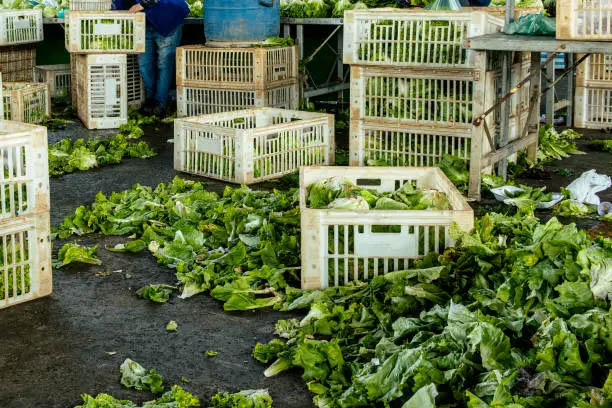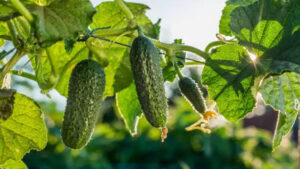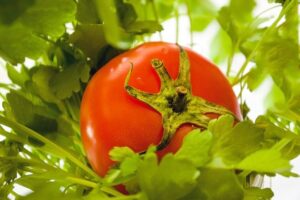In the serene landscapes where the pastoral beauty of farms belies the harsh realities beneath, today’s farmers grapple with an array of challenges that threaten both their livelihood and the very supply of our global food. These challenges are multifaceted, deeply interconnected, and often exacerbated by factors beyond any single farmer’s control. Here’s a deeper look into the key hardships faced by farmers across the globe.
1. Climatic Variability and Extreme Weather

Perhaps no factor is as unpredictably perilous as the weather. Climate change has increased the incidence of extreme weather events such as droughts, floods, and hurricanes, each capable of devastating crops and livestock in a stroke. For farmers, the weather isn’t just a topic of small talk; it’s a critical factor that determines the success or failure of their yearly output.
2. Pests and Disease
Agricultural pests and diseases follow closely on the heels of weather in terms of threats. Farmers must constantly monitor for signs of infestations and outbreaks, which can decimate crops and livestock populations. The fight against these biological threats is costly and requires continuous vigilance and adaptation to emerging threats.
3. Market Volatility
The prices of agricultural products can swing wildly due to factors like changes in global demand, trade policies, and economic downturns. These fluctuations make it challenging for farmers to predict their income and plan for the future, leading to significant financial instability. Government subsidies have often been used as a mechanism to buffer these market swings, providing financial support during periods of low prices or agricultural crises. However, while these subsidies can act as a temporary relief, they are not a panacea. They may not cover all types of crops or livestock equally, and their amounts may not fully compensate for the losses incurred during severe market downturns. Additionally, reliance on government support can make farmers vulnerable to changes in policy and budget priorities. This dependency does little to address the underlying causes of market volatility, such as global supply chain issues or international trade tensions, leaving farmers perpetually at risk of financial uncertainty.
4. Rising Operating Costs
Modern farming requires significant investment in machinery, seeds, fertilizer, and more. As the costs of these inputs climb, so too does the barrier to entry and sustainability in farming. Inflation exacerbates this challenge, as the prices for essential resources like fuel, equipment, and agricultural chemicals continue to rise. These increases can rapidly outpace the income gains from farming, squeezing the profit margins of farmers and making the economics of agriculture even more precarious. Furthermore, inflation affects not only the immediate costs of inputs but also the long-term planning and investment capability of farms. When coupled with the unpredictable nature of agricultural revenue, managing these escalating costs becomes a daunting task for farmers. This financial pressure can discourage new entrants into the farming sector and complicate the ability of existing farms to expand or update their practices with modern, more efficient technologies.
5. Labor Challenges

Agriculture is labor-intensive, yet farmers often face acute labor shortages. Reliance on seasonal labor, impacted by immigration policies and local economic conditions, creates a fragile foundation for the critical planting and harvest times. Inflation further complicates this issue by increasing the cost of labor. As wages rise to match the increased cost of living, farmers must either absorb these higher costs or pass them along in the prices of their products, which can make them less competitive in the market.
Additionally, there is a noticeable decline in interest among younger generations in pursuing careers in agriculture. Many young people are moving toward urban centers and professional jobs, perceiving farming as a less desirable or less profitable career path. This generational shift threatens the long-term sustainability of farming communities and the transfer of agricultural knowledge and traditions.
The potential formation or strengthening of labor unions within the agricultural sector also poses a significant concern. While unions can provide necessary protections for farm workers and promote fair wages and working conditions, they also have the potential to drive up labor costs. If unions negotiate higher wages or more stringent working conditions, small to medium-sized farm operations may struggle to meet these new financial demands, which could lead to increased mechanization or even business closures in some cases.
These labor challenges require multifaceted solutions, including incentivizing young people to enter the agriculture sector, potentially through educational programs or by demonstrating the viability and technological advancements in modern farming. Moreover, balancing fair labor practices with the economic realities of farming will be crucial to ensuring the sector’s resilience and sustainability.
6. Regulatory and Policy Pressures
Environmental, safety, and health regulations are essential for protecting resources and people. However, compliance can be a complex and costly endeavor for farmers. Moreover, shifts in policy can disrupt established agricultural practices and financial plans, adding layers of complexity to an already challenging profession. The pressure from climate activists and increasing concerns about the environmental impact of farming practices, especially in cattle farming and pesticide use, further complicates this landscape. Cattle farms face scrutiny over methane emissions, a potent greenhouse gas, while the use of pesticides raises concerns about biodiversity and water contamination. These factors lead to stricter regulations and a growing demand for sustainable farming practices, pushing farmers to adapt to more environmentally friendly methods, often at a greater cost and effort.
7. Land Accessibility and Soil Health

Access to land is a fundamental need in agriculture, yet securing this resource has become increasingly challenging, especially for new and expanding farms. The rising costs of agricultural land create a significant barrier to entry, effectively forming a moat that prevents many potential farmers from entering the market. This issue is compounded by the concentration of land ownership; as land values increase, existing farmers may find it difficult to expand their operations. This restricts the market to legacy farms and large agricultural corporations that have the capital to invest in and hold large tracts of land.
For smaller or medium-sized farms, the escalating land prices can force decisions that further consolidate the industry. When faced with financial pressures, these farmers may find themselves with little choice but to sell their lands to larger operations, which are often the only entities capable of affording such investments. This trend not only reduces the diversity of farm ownership but also limits the agricultural market’s ability to innovate and adapt, as larger corporations may prioritize scale and efficiency over sustainable or niche practices.
The impact of high land costs extends beyond limiting market entry and expansion. It also influences the overall sustainability of farming practices. As the cost of entry and expansion rises, it becomes economically infeasible for many farmers to invest in innovative, sustainable practices that often require upfront capital. This financial dynamic can lead to a reliance on intensive, less sustainable farming methods that maximize short-term returns at the expense of long-term soil health and environmental sustainability.
Addressing these challenges involves a multi-pronged approach, including policy interventions to make land more accessible and affordable for new and expanding farmers. Financial supports such as grants, low-interest loans, and incentives for sustainable practices could also help balance the scales against the consolidation trends, encouraging a more diverse and sustainable agricultural sector.
8. Technological and Infrastructure Gaps
Keeping up with technological advancements is vital for competitive farming but can be prohibitively expensive. Additionally, many rural areas lack the necessary infrastructure, like roads and internet connectivity, which hampers efficient farm management and access to markets. Furthermore, the integration of high-tech equipment and software in farming operations introduces new challenges. Software updates for modern tractors and tools can take hours, leading to downtime that delays crucial agricultural processes. Moreover, repairs for sophisticated machinery often require specialized service from the manufacturer, adding to delays and increasing costs.
9. Mental Health

The accumulation of stresses in the farming sector, from financial instability and labor shortages to the challenges of land accessibility and regulatory compliance, places farmers at a high risk of mental health issues. The often-isolating nature of farm life exacerbates these pressures, making farmers particularly vulnerable to stress, anxiety, and depression. Unfortunately, the severe strain and lack of adequate mental health resources in rural areas can lead some farmers to resort to suicide, marking a tragic outcome of the intense pressures they face.
One bad season can have catastrophic effects on a farmer’s finances, potentially wiping out an entire year’s income and pushing them into significant debt. The inherent unpredictability of farming—be it due to weather events, pest infestations, or market fluctuations—means that such risks are always present. The financial and emotional toll of losing a crop or livestock, especially when compounded by high operating costs and debt, can be overwhelming. The fear of failure not only affects the individual farmer but often has ripple effects on their families and the broader community.
Addressing mental health in the agricultural sector requires more than just acknowledging the problem; it necessitates a robust support system tailored to the unique challenges faced by farmers. This could include increased accessibility to mental health services in rural areas, programs designed to reduce the stigma associated with seeking help, and interventions aimed at reducing the financial pressures that contribute to mental health struggles. Providing farmers with better tools to manage risk, such as more comprehensive insurance schemes and financial planning resources, can also alleviate some of the stress associated with their profession.
Ultimately, improving the mental well-being of farmers is vital not only for their health but for the sustainability of agriculture itself. A focus on mental health can lead to more resilient farming communities, capable of withstanding the various shocks that the agricultural sector faces.
Solutions and Support

Addressing the myriad challenges facing the agricultural sector requires concerted efforts from various stakeholders, including government agencies, industry groups, and local communities. Solutions range from adopting more sustainable farming practices to ensure long-term soil health and crop productivity, to implementing supportive policies that stabilize market fluctuations and provide financial safety nets for farmers. Innovation in agricultural technologies and infrastructure development also plays a crucial role, offering tools and capabilities that can reduce labor demands and increase efficiency.
Awareness is a critical component of these solutions. Increasing public understanding of the difficulties faced by farmers can foster greater support for policies that benefit the agricultural sector and encourage consumer behavior that supports sustainable and fair farming practices. Educating the public about where their food comes from and the challenges involved in producing it can lead to more informed choices, such as purchasing locally sourced products or supporting brands that prioritize fair practices and sustainability.
Furthermore, building awareness among farmers themselves about available resources and new agricultural techniques can empower them to improve their operations and sustainability. Programs designed to educate farmers about mental health, financial planning, and risk management can significantly mitigate the pressures they face.
Community-based initiatives that promote dialogue and support networks among farmers can also play a vital role. By creating a sense of community and shared purpose, these initiatives can help reduce the isolation that many farmers feel and provide a platform for sharing strategies and innovations that may not be widely recognized.

The integration of these solutions, underpinned by heightened awareness and education, can lead to a more resilient, sustainable, and supportive farming industry, ensuring the well-being of both the farmers and the populations they feed. While the challenges are significant, the resilience and innovation within the agricultural community continue to drive forward solutions that sustain not only the farmers themselves but also the global populations they feed. As we move forward, recognizing and supporting the critical role of farmers is essential for a stable and prosperous future.










